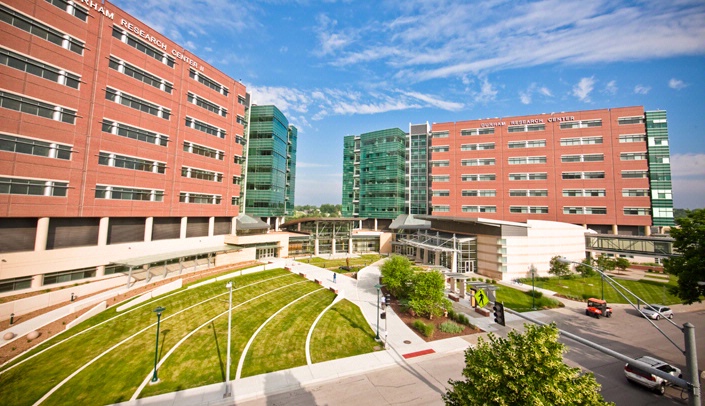A recent analysis of an Association of American Medical Colleges (AAMC) 2012 economic impact assessment of U.S. medical schools revealed that among its peers in similarly populated states, the academic medical industry in Nebraska has the largest economic impact on the communities it serves.
The news came as little surprise to UNMC Chancellor Jeffrey P. Gold, M.D.
“Sometimes within a community we don’t always see ourselves from a national perspective,” Dr. Gold said. “We are highly, highly regarded across the United States and around the world.”
The total direct economic impact of academic medicine in Nebraska, at $1.8 billion, ranks ahead of Rhode Island ($1.7 billion), New Hampshire ($1.5 billion), West Virginia ($1.2 billion), New Mexico ($950 million), Hawaii ($242 million), and Nevada ($200 million), among states with between 1 million and 3 million in populations.
Nebraska’s academic medical economy includes data from both UNMC and Creighton University.
As a city, the Omaha market outperformed strong academic medical industry centers in peer markets such as Rochester, N.Y. ($1.7 billion), Little Rock, Ark. ($1.2 billion), Tucson, Ariz. ($1.2 billion), Albany, N.Y. ($1.2 billion), and Albuquerque, N.M. ($950 million) — markets with very similar metro populations.
Nationally, among peer markets, Omaha ranks second, behind only Birmingham, Ala. ($2.9 billion), home of the University of Alabama at Birmingham, a nationally recognized academic medical center.
But Omaha is poised to take yet another step, said Paul Umbach, president of Tripp Umbach, the consulting firm that conducted the analysis.
“Omaha is already a major economic player in the academic medicine industry, with an exceptionally bright future to join the top tier centers,” Umbach said.
Nebraska may count itself fortunate. Many larger metro markets such as Las Vegas, Charlotte, N.C., and Austin, Texas, do not have established academic medical centers. Likewise, two peer states, Idaho and Montana, do not have medical schools.
Tripp Umbach, a consulting firm headquartered in Pittsburgh, analyzed data from the national AAMC database, which is based on 2015 data.
A 2015 study from Tripp Umbach of UNMC and its clinical partner, Nebraska Medicine, showed the combined organization has a $4.2 billion annual impact on the state economy.
